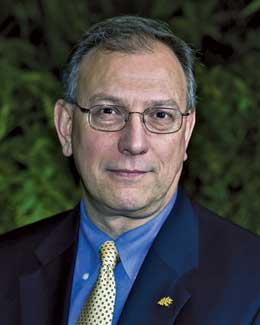
Roderick Cameron, ASLA, AICP, of Brookfield, Conn., became president of the Connecticut chapter of the ASLA upon Brian?EUR??,,????'?????<
I have been practicing for over 50 years and am from the vintage of when we understood and spoke English. The new language uses, again and again, new buzzwords and phrases; such as, ?EUR??,,????'?????<
I hate the word ?EUR??,,????'?????<
Landscaping that involves plantings that demand more water than found naturally on the site (as lawn grass, exotic plants or native plants out-of-place), lighting, paved parking and changes in the contours inherently demand a continual infusion of funds. A golf course or sports complex or park that demands millions of gallons of water, electricity for pumps and drainage systems and lighting, is not sustainable?EUR??,,????'?????<
In a sustainability-feasibility checklist for landscape projects one should consider the costs of electricity (for lighting, controllers, pumps); water (including meters and monthly charges); maintenance (fertilizers, sprays, labor, equipment and replacements, etc.); and taxes (direct or loss). Most projects involving landscaping would fail miserably in a cost-benefit-ratio analysis. I hate the word sustainable! Ted Green, ASLA, APA
Kaaawa, Hawaii

For years, many cities in Massachusetts have been asking homeowners to care for public shade trees. In Wellesley, Mass. for example, all new trees are planted on private property, within 20 feet of the street. Homeowners are given a choice of tree, so it becomes theirs to own and maintain. The city not only has many more beautiful and healthy trees, but a very popular planting program that has to turn down requests for additional funding.
In the ?EUR??,,????'?????<
Roderick Cameron, ASLA, AICP, of Brookfield, Conn., became president of the CTASLA upon Brian?EUR??,,????'?????<
